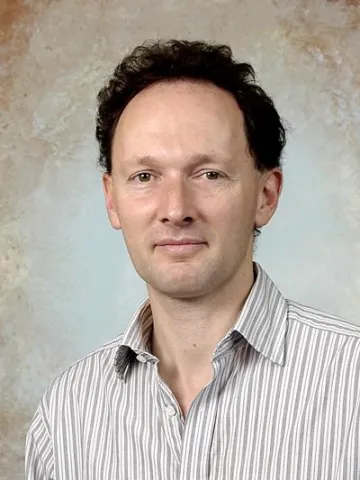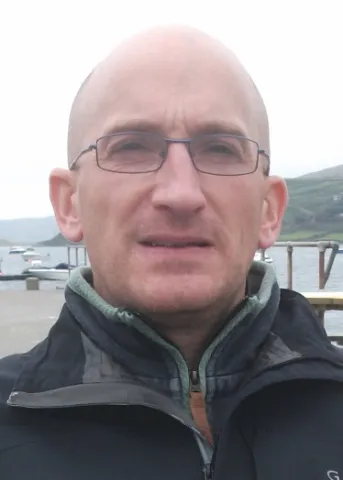Project overview
Carbon dioxide (CO2) separated from natural gas has been stored successfully below the seabed off Norway for almost two decades. Based on this experience several demonstration projects supported by the EU and its member states are now setting out to store CO2 captured at power plants in offshore geological formations. The ECO2 project was triggered by these activities and funded by the EU to assess the environmental risks associated with the sub-seabed storage of CO2 and to provide guidance on environmental practices. ECO2 conducted a comprehensive offshore field programme at the Norwegian storage sites Sleipner and Snøhvit and at several natural CO2 seepage sites in order to identify potential pathways for CO2 leakage through the overburden, monitor seep sites at the seabed, track and trace the spread of CO2 in the water column, and study the response of benthic biota to CO2. ECO2 identified a rich variety of geological structures in the broader vicinity of the storage sites that probably served as conduits for gas release in the geological past and located a seabed fracture and several seeps and abandoned wells where natural gas and formation water are
released into the marine environment. Even though leakage may occur if these structures are not avoided during site selection, observations at natural seeps, release experiments, and numerical modelling revealed that the footprint at the seabed where organisms would be impacted by CO2 is small for realistic leakage scenarios. Based on these results, a new approach for environmental risk assessment (ERA) was developed for sub-seabed storage sites. It uses the EBSA (Ecologically or Biologically Significant Marine Areas) approach to describe marine resources in the studied area and to assess a site-specific environmental value for each highlighted resource. Subsequently, potential leak features that can connect the CO2 stored in the target formation with the seabed are identified and the size of the affected seafloor is estimated for a range of leakage scenarios. Overlay analysis between the affected area and the identified valuable resources reveal the consequences of leakage. Bayesian methods are
applied to determine a propensity-to-leak factor dealing with the geological complexity of the overburden. The environmental risk is finally assessed as the product of consequences and propensity of leakage. The novel ERA approach was tested and applied to assess the environmental risks of the storage operation conducted at Sleipner. The monitoring strategy proposed by ECO2 is organized around a suite of surveys covering the area above the storage formation. ECO2 recommends that overburden, seabed, and water column should be monitored and surveyed applying the following techniques: i) 3-D seismic, ii) high-resolution bathymetry/backscatter mapping of the seabed, iii) hydro-acoustic imaging of shallow gas accumulations in the seabed and gas bubbles ascending into the water column, iv) video/photo imaging of biota at the seabed, v) chemical detection of dissolved CO2 and related parameters in
ambient bottom waters. Additional targeted studies have to be conducted if active formation water seeps, gas seeps, and pockmarks with deep roots reaching into the storage formation occur at the seabed. These sites have to be revisited on a regular basis to determine emission rates of gases and
fluids and exclude that seepage is invigorated and pockmarks are re-activated by the storage operation. Baseline studies serve to determine the natural variability against which the response of the storage complex to the storage operation has to be evaluated. All measurements being part of the monitoring program, thus, need to be performed during the baseline study prior to the onset of the storage operation to assess the spatial and temporal variability of leakage-related structures, parameters, and processes. ECO2 conducted additional studies to assess the legal framework, analyse the economics, and
evaluate the public perception of CO2 storage below the seabed.
released into the marine environment. Even though leakage may occur if these structures are not avoided during site selection, observations at natural seeps, release experiments, and numerical modelling revealed that the footprint at the seabed where organisms would be impacted by CO2 is small for realistic leakage scenarios. Based on these results, a new approach for environmental risk assessment (ERA) was developed for sub-seabed storage sites. It uses the EBSA (Ecologically or Biologically Significant Marine Areas) approach to describe marine resources in the studied area and to assess a site-specific environmental value for each highlighted resource. Subsequently, potential leak features that can connect the CO2 stored in the target formation with the seabed are identified and the size of the affected seafloor is estimated for a range of leakage scenarios. Overlay analysis between the affected area and the identified valuable resources reveal the consequences of leakage. Bayesian methods are
applied to determine a propensity-to-leak factor dealing with the geological complexity of the overburden. The environmental risk is finally assessed as the product of consequences and propensity of leakage. The novel ERA approach was tested and applied to assess the environmental risks of the storage operation conducted at Sleipner. The monitoring strategy proposed by ECO2 is organized around a suite of surveys covering the area above the storage formation. ECO2 recommends that overburden, seabed, and water column should be monitored and surveyed applying the following techniques: i) 3-D seismic, ii) high-resolution bathymetry/backscatter mapping of the seabed, iii) hydro-acoustic imaging of shallow gas accumulations in the seabed and gas bubbles ascending into the water column, iv) video/photo imaging of biota at the seabed, v) chemical detection of dissolved CO2 and related parameters in
ambient bottom waters. Additional targeted studies have to be conducted if active formation water seeps, gas seeps, and pockmarks with deep roots reaching into the storage formation occur at the seabed. These sites have to be revisited on a regular basis to determine emission rates of gases and
fluids and exclude that seepage is invigorated and pockmarks are re-activated by the storage operation. Baseline studies serve to determine the natural variability against which the response of the storage complex to the storage operation has to be evaluated. All measurements being part of the monitoring program, thus, need to be performed during the baseline study prior to the onset of the storage operation to assess the spatial and temporal variability of leakage-related structures, parameters, and processes. ECO2 conducted additional studies to assess the legal framework, analyse the economics, and
evaluate the public perception of CO2 storage below the seabed.
Staff
Lead researchers
Other researchers
Research outputs
Marius Dewar, Umer Saleem, Anita Flohr, Allison Schaap, James Strong, Jianghui Li, Ben Roche, Jonathan Bull, Baixin Chen & Jerry Blackford,
2021, International Journal of Greenhouse Gas Control, 110
Type: article
Jonathan Bull, Christian Berndt, Timothy Minshull, Timothy Henstock, Gaye Bayrakci, Romina Gehrmann, Giuseppe Provenzano, Christoph Böttner, Bettina Schramm, Ben James Callow & mark chapman,
2018
Type: conference
A. Lichtschlag, M. Cevatoglu, D.P. Connelly, R.H. James & J.M. Bull,
2018, Geochemistry, Geophysics, Geosystems
DOI: 10.1002/2017GC007181
Type: article
Melis Cevatoglu, Jonathan M. Bull, Mark E. Vardy, Thomas M. Gernon, Ian C. Wright & David Long,
2015, International Journal of Greenhouse Gas Control, 38, 26-43
Type: article
Jerry Blackford, Jonathan M. Bull, Melis Cevatoglu, Douglas Connelly, Chris Hauton, Rachael H. James, Anna Lichtschlag, Henrik Stahl, Steve Widdicombe & Ian C. Wright,
2015, International Journal of Greenhouse Gas Control, 38, 221-229
Type: article
B.J.P. Berges, T.G. Leighton & P.R. White,
2015, International Journal of Greenhouse Gas Control, 38, 64-79
Type: article
Jerry Blackford, Henrik Stahl, Jonathan M. Bull, Benoît J.P. Bergès, Melis Cevatoglu, Anna Lichtschlag, Douglas Connelly, Rachael H. James, Jun Kita, Dave Long, Mark Naylor, Kiminori Shitashima, Dave Smith, Peter Taylor, Ian Wright, Maxine Akhurst, Baixin Chen, Tom M. Gernon, Chris Hauton, Masatoshi Hayashi, Hideshi Kaieda, Timothy G. Leighton, Toru Sato, Martin D.J. Sayer, Masahiro Suzumura, Karen Tait, Mark E. Vardy, Paul R. White & Steve Widdicombe,
2014, Nature Climate Change, 4, 1011-1016
DOI: 10.1038/NCLIMATE2381
Type: article

